ESG / CSR
Industries
Canada Wildfires: Causes, Consequences and Lessons
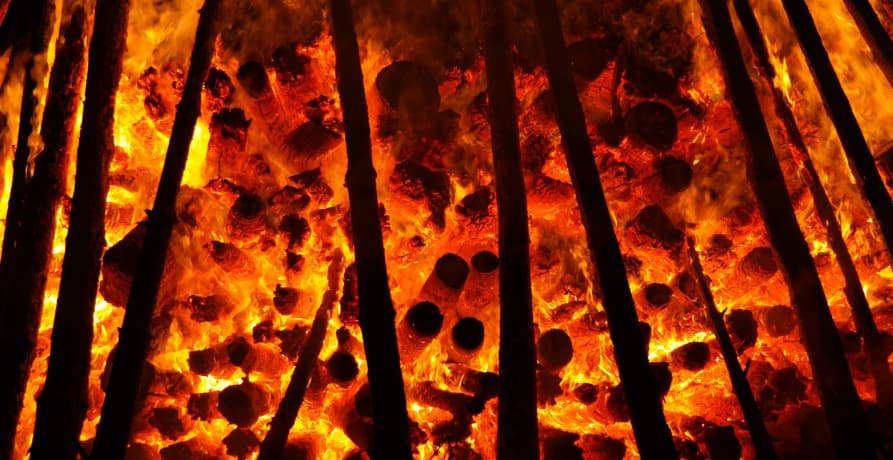


Images of yellow-hued skies and news reports about the cancellation of flights thousands of miles away hit headlines in spring 2023 - the cause? Canadian wildfires.
Canada is no stranger to wildfires, but in recent years they seem to be burning stronger and for longer, putting human lives at risk, destroying villages, and threatening delicate ecosystems. Is this a sign of things to come, and is there anything that we can do to prevent wildfires from spiralling out of control?
👉 In this article we’ll explore why the Canada wildfires have been especially bad this year, what the link to climate change is, and what can be done to reduce the risk of wildfires in the future.
What’s going on with the Canada wildfires?
In recent years we’ve heard a lot about the wildfires in Canada - and it feels like they're only getting worse and worse. So what exactly is going on?
So far this year, 6,118 fires have consumed 16.565 million hectares (40.93 million acres) in Canada, surpassing the 1989 record of 7.6 million hectares. Starting in late April in British Columbia and Alberta, these fires have displaced over 30,000 residents and briefly halted oil and gas production. Four firefighters have also tragically lost their lives.
And there's concern that the fire season isn't over yet - over 600 fires are still active across the country, nearly half of which are considered to be uncontrollable. What's more, is that many provinces now face extreme drought as a result of the hot weather. Last year's similar drought resulted in devastating floods, and current conditions are graver. Officials fear that abrupt heavy rains could lead to severe flooding, potentially surpassing last year's damage - creating more issues for regions that are already reeling from the devastating wildfires.
What's interesting to note however is that wildfires in Canada are actually pretty normal, especially on the western side of the country - Canada has been experiencing them in its warmer months for decades. What is unusual is that it’s now happening in eastern Canada too, and earlier in the season than normal.
So what’s the reason for this change? Well, the main reason is the weather - this year in particular has been especially warm and dry. According to experts, eastern Canada experienced 50% less precipitation than normal this spring. Western Canada has also been affected by this hotter-than-usual weather - May 2023 was their warmest and driest on record! And this pattern continued throughout the summer - July saw global record temperatures broken, and in August temperatures in the Northern Hemisphere were the hottest on record since 1940.
How did the Canada wildfires start?
There are three ingredients that fuel the larger forest fires we’ve been seeing in Canada. The first element is some kind of fuel - for example this might be grass, shrubs or trees (the drier the better). The second element that must be present is some kind of ignition source - often the source is man-made, for example unattended campfires or a discarded cigarette, but it can also be natural and result from the sun’s heat or even a lightning strike. The third element that must be present is hot, dry and windy weather - the wind in particular has the power to spread wildfires quickly, as oxygen is needed to light and sustain a fire.
👉 Most years lightning is responsible for around half of all Canada’s wildfires and for as much as 85% of the total area burnt each year. However, in 2023 it is suspected that human activity has been a primary driving factor.
The moisture content of an area also influences how far the fire is able to burn. If vegetation is moist the fire will be slower to take off and to spread, conversely, as has been the case in Canada, when the weather is hot and dry, fires are able to spread easily and can be difficult for emergency services to get under control.
👉 Where humidity in the air is high, it is difficult for wildfires to spread as the fire first needs to burn off the moisture present in the air.
Forest fires can actually be beneficial
Forest fires are a natural and essential part of the cycle for many ecosystems, and in certain areas plants and animals have adapted to depend on wildfires for ecological balance.
However, when forest fires happen more frequently and more intensely they become harmful. For a start it means that ecosystems are not able to get enough time to recover - which can alter the ecosystem and impact biodiversity. Large forest fires that burn out of control are also incredibly dangerous and destructive - especially where communities and homes lie in the path of the fire.
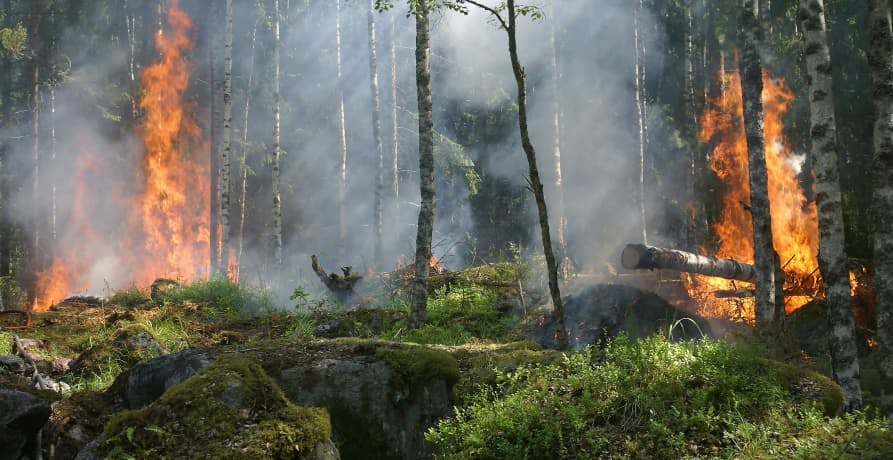
What’s the impact of the Canada wildfires?
Risk to local species
Wildfires decimate forest, destroying everything in its path - including animals, birds and other creatures.
Certain species are particularly at risk from local extinction if wildfires reach their area of habitation. This year, experts have focused their concern on the Whooping Crane (found in Alberta), and the Wood Poppy (found in Ontario). If these species were to be lost, the entire local ecosystem would be thrown out of balance.
👉 Local extinction is where a species no longer exists within a certain geographical location.
Beyond risk of local species extinction, fires also have the potential to impact migratory patterns and communication abilities. For example, birds are particularly susceptible to smoke and the damage to their lungs can impact their ability to communicate and find mates. Not only this, but if wildfires destroy their habitat, they may struggle to find a suitable nesting ground.
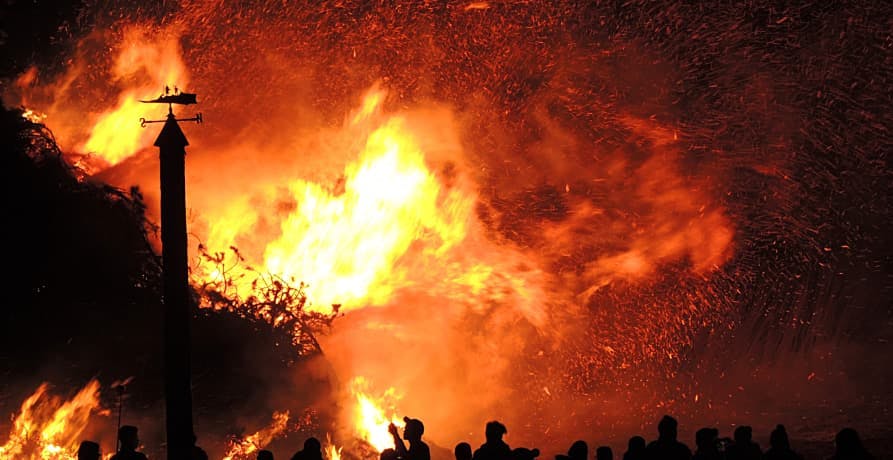
Threat to human health
In 2023, images of yellow skies as far south as New York, and news reports warning people to stay indoors dominated the headlines. The smoke caused by these wildfires is a health hazard and responsible for increased health issues - even in areas that lie thousands of miles away from the location of the fire.
The reason for this harm is the pollutants that can be found in wildfire smoke. Known as particle pollution, this mix of particles suspended in the air is able to enter and lodge deep in our lungs. This can cause a number of health issues ranging from relatively minor problems such as eye and respiratory tract irritation to more serious concerns such as asthma, strokes, and even heart attacks.
👉 Studies have shown that children who breathe in smoke from wildfires suffer from more coughing, wheezing, bronchitis, colds, and incidences of respiratory issues such as asthma.
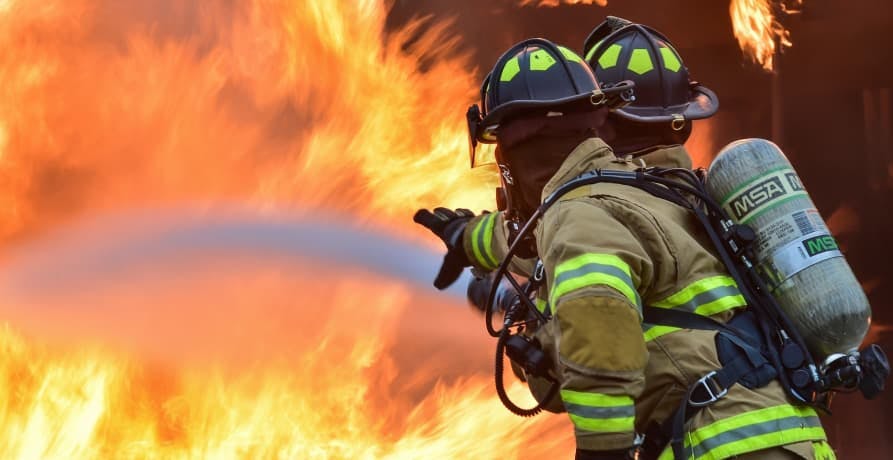
Environmental impact
There are a multitude of environmental issues stemming from aggressive forest fires.
For example, water resources are at risk of becoming polluted. The soil's capacity to absorb water is reduced following a wildfire, which means that it retains higher levels of nitrogen and carbon dioxide - the effect being that the quality of drinking water in the affected area is reduced.
The destruction of vegetation and ecosystems is also a concern as it increases the risk of disease and pests. Not only this, when vegetation and forest is destroyed, the earth’s capacity to absorb carbon is also depleted - this is because forests and vegetation act as a carbon sink.
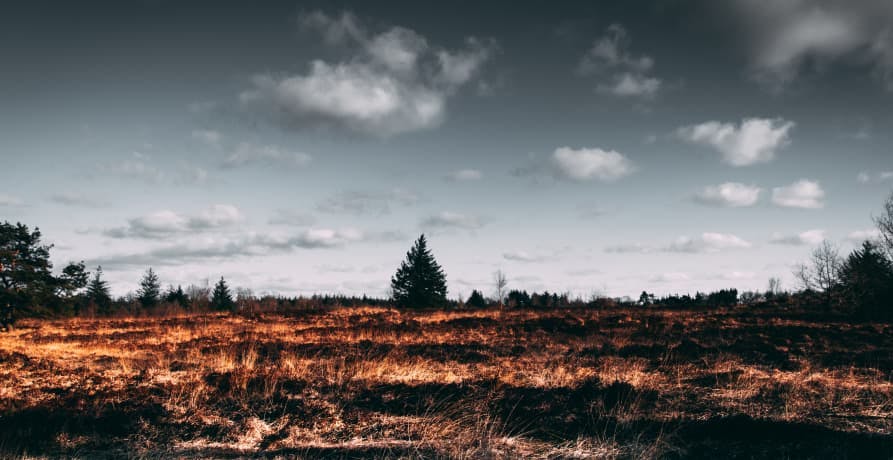
Disruption to services and infrastructure
Wildfires are incredibly disruptive. They are capable of disrupting transportation services, communications, energy, and water supplies. Just look at the recent wildfires on the east coast of Canada - the smoke disrupted air travel as far south as New York. Flights were delayed and cancelled at both Newark Liberty International Airport and LaGuardia Airport.
Wildfires also impact the local economy through the destruction of businesses and livelihoods. For example, several sawmills in Canada were forced to close, driving up the price of wood and delaying construction projects that are dependent on these raw materials.
Not only this, wildfires also significantly affect tourism with tourists either cancelling or delaying trips to affected regions.
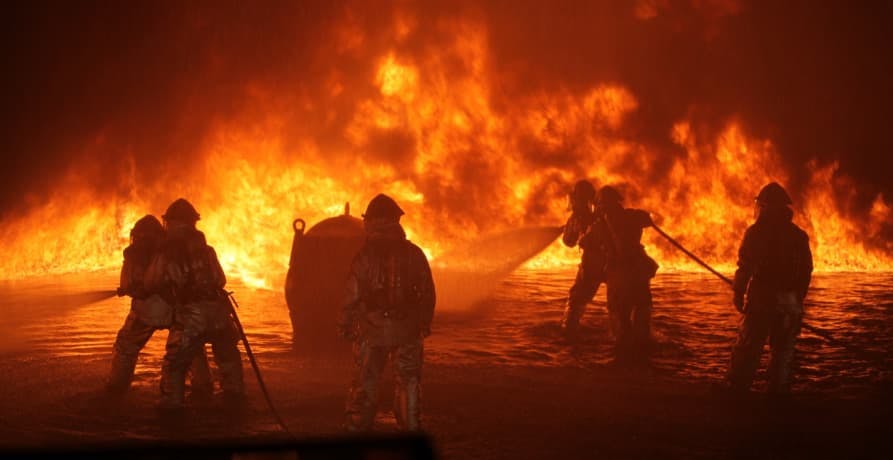
Is climate change driving more wildfires?
Canada’s prime minister, Justin Trudeau recently tweeted that more wildfires are being experienced as a result of climate change - but is this true?
There is a clear link between climate change and the frequency and intensity of wildfires. One of the key indicators of this connection is the vapour pressure deficit. This is something that measures how well the atmosphere is able to pull moisture from vegetation. The greater the deficit, the greater the risk of forest fires. Research suggests that in recent decades the vapour pressure deficit has increased, in line with the increasing impacts of climate change.
The IPCC also found that increasingly hot, dry, and windy conditions, as well as more intense and frequent heatwaves, have also increased the risk of wildfires igniting and spreading. This is already an issue in many parts of the world but is expected to affect new regions as global warming takes hold. Canada is used to wildfires in the west of the country, however, this year the east has also been severely impacted.
👉 Climate change is warming Canada at twice the global average, and if you look at the wildfire season of the 1950s and compare it with seasons in recent years, we can see that it starts one week earlier, and finishes a week later.
Other factors that made the Canada wildfires more likely
Although there is a clear link between climate change and the increasing frequency and severity of wildfires around the world, it’s not the only factor that is making wildfires more likely.
Human development in areas of forest has also increased the risk of wildfires being ignited. In fact, it’s suspected that a large portion of Canada’s 2023 spring wildfires stems from human activity.
Another factor that has created a situation allowing the wildfires in Canada to ignite and spread more easily is budget cuts to Canada’s forestry services, combined with restrictive policies that have discouraged traditional and indigenous practices of planned burning, which clears the forest floor of debris which can build up and allow forest fires to grow out of control.
👉 In 2021 British Columbia spent 801 Canadian dollars fighting forest fires, however, this year’s fire prevention budget is only 32 million Canadian dollars.
What can be done to prevent wildfires?
In order to prevent increasing incidences of wildfires, it’s essential that we limit further global warming. As long as we continue to burn fossil fuels and increase the amount of greenhouse gases in our atmosphere we’ll continue to feel the effects of climate change. This means more frequent heatwaves, and drier, hotter weather - both of which make forest fires more likely.
However, it’s also essential that we work to mitigate the risk of uncontrolled wildfires and to help communities in at-risk areas to become more resilient to these events. This requires appropriate funding and investment in community-based programs.
👉 Programs that focus on measures such as clearing the dead debris from the forest floors, and creating fire breaks between communities and forests can help to reduce the risk of a wildfire spiralling out of control and impacting human settlements.
It’s also been suggested that the practice of controlled burning should be expanded so that dead trees, brush, and other materials are burned off, preventing them from acting as tinder in uncontrolled fires.
What about Greenly?
At Greenly we can help you to assess your company’s carbon footprint, and then give you the tools you need to cut down on emissions. Why not request a free demo with one of our experts - no obligation or commitment required.
If reading this article has inspired you to consider your company’s own carbon footprint, Greenly can help. Learn more about Greenly’s carbon management platform here.






